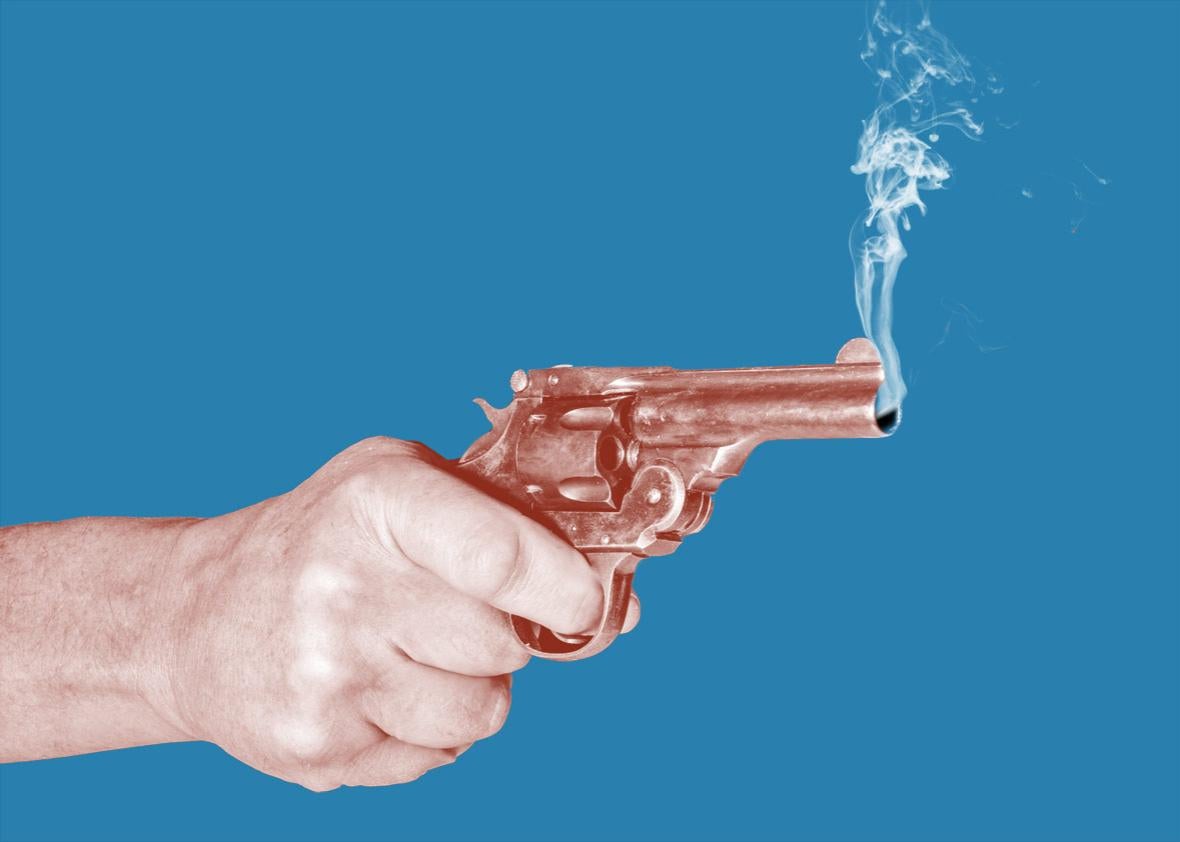Last week, Donald Trump Jr. released his June 2016 emails setting up a meeting with Natalia Veselnitskaya, a Kremlin-linked lawyer who was offering dirt on his father’s opponent, Hillary Clinton. The Washington Post, Politico, Slate, and others have described the emails as a possible “smoking gun” proving the Trump campaign conspired with the Russian government. Has the “smoking gun” in a criminal case ever been a literal smoking gun?
Yes, though it hasn’t typically been the decisive piece of evidence. In 1896, a prominent dentist in Abbeville, South Carolina, shot Sallie Emma Owen, an aristocratic woman who had declined his marriage proposal the day before. One of the witnesses to the crime later said he “saw the man and the smoke from his gun.” In 1898, a Southern California man killed the woman who washed his laundry, apparently out of anger over a missing shirt. The man, Frank Valerga, killed his victim in front of her husband and son, who saw a smoking shotgun in his hand in the moments afterwards. “The pair were forced to stand helpless and see the woman writhe and groan in agony, frightened by the evidence of murder, cowed by the sight of the still smoking gun in the hands of the murderer,” reported the Los Angeles Herald.
More recently, a witness in the 2000 trial of two men accused of murdering a veteran in a U.K. nightclub reported seeing one of the suspects holding a smoking gun. “The barrel had smoke coming out of it, like it had just been fired,” she testified in court. The defendants both received life sentences. Similarly, the prosecution in a 2009 Oklahoma trial relied on witness testimony indicating that defendant Derick Fields was holding a smoking gun after twice shooting Jericho Watts in a deserted lot. The jury voted to convict Fields.
A smoking gun also led to the conviction of rapper Jamal “Shyne” Barrow, who shot up a Times Square nightclub while attempting to defend his mentor, Sean “Puff Daddy” Combs. In the 1999 incident, Combs got into an argument with a man known as “Scar” as he was leaving Club New York with then-girlfriend Jennifer Lopez. The conflict turned violent, and Barrow started shooting. Three people were injured. Several witnesses claimed they saw smoke rising from the muzzle of the rapper’s gun. Barrow was imprisoned for almost nine years.
Smoking guns aren’t always evidence of a shootout. In 2010, three young adults from Wexford, Ireland, uploaded a YouTube video of themselves smoking marijuana from the barrel of what appeared to be an assault rifle. The Wexford police conducted a raid and brought the youths in for questioning but later discovered the rifle was a replica. Chief Superintendent John Roche told the press, “You wouldn’t have to have been Sherlock Holmes to figure this one out.” He added, “There was a smoking gun in this case.”
The origins of the phrase smoking gun can indeed be traced back to Sir Arthur Conan Doyle’s 1893 Sherlock Holmes story “The Adventure of the ‘Gloria Scott,’ ” in which the savant detective catches a murderous chaplain holding a “smoking pistol.”
The sight of a smoking gun was much more common in Doyle’s day than it is now. The source of the smoke that wafts out of a recently discharged firearm is the propellant left burning in the barrel. The black powder used as propellant in 19th-century guns produced thick plumes of lead, carbon, sulfur, and potassium nitrate when combusted. Modern guns use smokeless powder, which usually emits only a wisp.
In spite of that, it wasn’t until relatively recently, in the wake of the Watergate scandal, that smoking gun became shorthand for proof of guilt. The term caught on after New York Rep. Barber Conable said one of the Nixon tapes “looked like a smoking gun” after the House Judiciary Committee released the transcript in August 1972.
Explainer thanks retired New York Police Department Detective James M. Gannalo, former Florida Department of Law Enforcement laboratory analyst Josh Wright, and former technical expert for the Canadian Federal Department of Justice Alan Voth.
